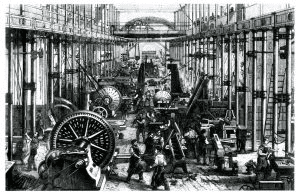|
Flashcards: Social And Cultural Awakening, The Lower Caste, Trade Union And Peasants Movements 44 Flashcards 
|
|
Card: 1 / 44 |
The 1857 Revolt was the first major expression of discontent against British rule in India. True or False? |
|
Card: 2 / 44 |
False. The 1857 Revolt was a major outburst, but it was not the first expression of resentment against British rule, as various incidents of resistance had occurred prior to this event.  |
|
Card: 3 / 44 |
People's resistance against British rule involved only the peasant class. True or False? |
|
Card: 4 / 44 |
False. People's resistance involved diverse sections of society, including peasants, artisans, tribals, ruling classes, military personnel, and religious leaders from both Hindu and Muslim communities.  |
|
Card: 5 / 44 |
Fill in the blanks: Joint and separate movements included protests against ___ and municipal taxes. |
|
Card: 7 / 44 |
Military revolts were considered a form of people's resistance because they involved Indians employed in the Company's forces who rebelled against the British. True or False? |
|
Card: 11 / 44 |
True or False: The colonial legal system was designed to provide justice for the common people. |
|
Card: 12 / 44 |
False. The colonial legal system protected the interests of the government and its collaborators, failing to deliver justice to the common people. |
|
Card: 13 / 44 |
Under colonial rule, people commonly protested against high land revenue demands, corruption, and ___ by officials. |
|
Card: 15 / 44 |
What was a significant consequence of the lack of attention to grievances under colonial rule? |
|
Card: 16 / 44 |
It led to widespread discontent and eventual armed resistance among the population.  |
|
Card: 17 / 44 |
Fill in the blank: The plight of tribal people during colonial rule was intensified by the intrusion of ___ into their independent tribal polity. |
|
Card: 19 / 44 |
True or False: Armed resistance was a chosen option for the people due to the oppressive policies of colonial rulers. |
|
Card: 22 / 44 |
The destructive colonial policies and the lack of a responsive legal system contributed significantly to the uprisings.  |
|
Card: 23 / 44 |
Colonial land revenue settlements led to the eviction of peasants from their lands. True or False? |
|
Card: 24 / 44 |
True. The colonial land revenue system imposed heavy taxes which resulted in the eviction of peasants. |
|
Card: 25 / 44 |
The expansion of revenue administration over tribal lands resulted in ___ of tribal people’s hold over agricultural land. |
|
Card: 27 / 44 |
What was one major consequence of the destruction of indigenous industries in India during colonial rule? |
|
Card: 28 / 44 |
The destruction of indigenous industries led to the migration of workers from industry to agriculture, increasing pressure on agricultural land.  |
|
Card: 31 / 44 |
The exploitation in rural society was coupled with the rise of ___ and ___ in the agricultural sector. |
|
Card: 33 / 44 |
True or False: Civil uprisings were primarily supported by wealthy landlords and British officials. |
|
Card: 34 / 44 |
False. Civil uprisings were mainly supported by rack-rented peasants, unemployed artisans, and demobilized soldiers. |
|
Card: 35 / 44 |
The loss of control over land and money by local leaders during British rule contributed to civil uprisings due to feelings of ___ and ___ among the affected classes. |
|
Card: 41 / 44 |
True or False: Civil uprisings were mainly driven by nationalistic sentiments against British rule. |
|
Card: 42 / 44 |
False. They were largely driven by local grievances and aimed at restoring earlier forms of rule and social relations. |
|
Card: 43 / 44 |
True or False: The Sanyasi Revolt saw equal participation from Hindus and Muslims. |






























